5 Most Expensive Grocery Products Ahead of Fall
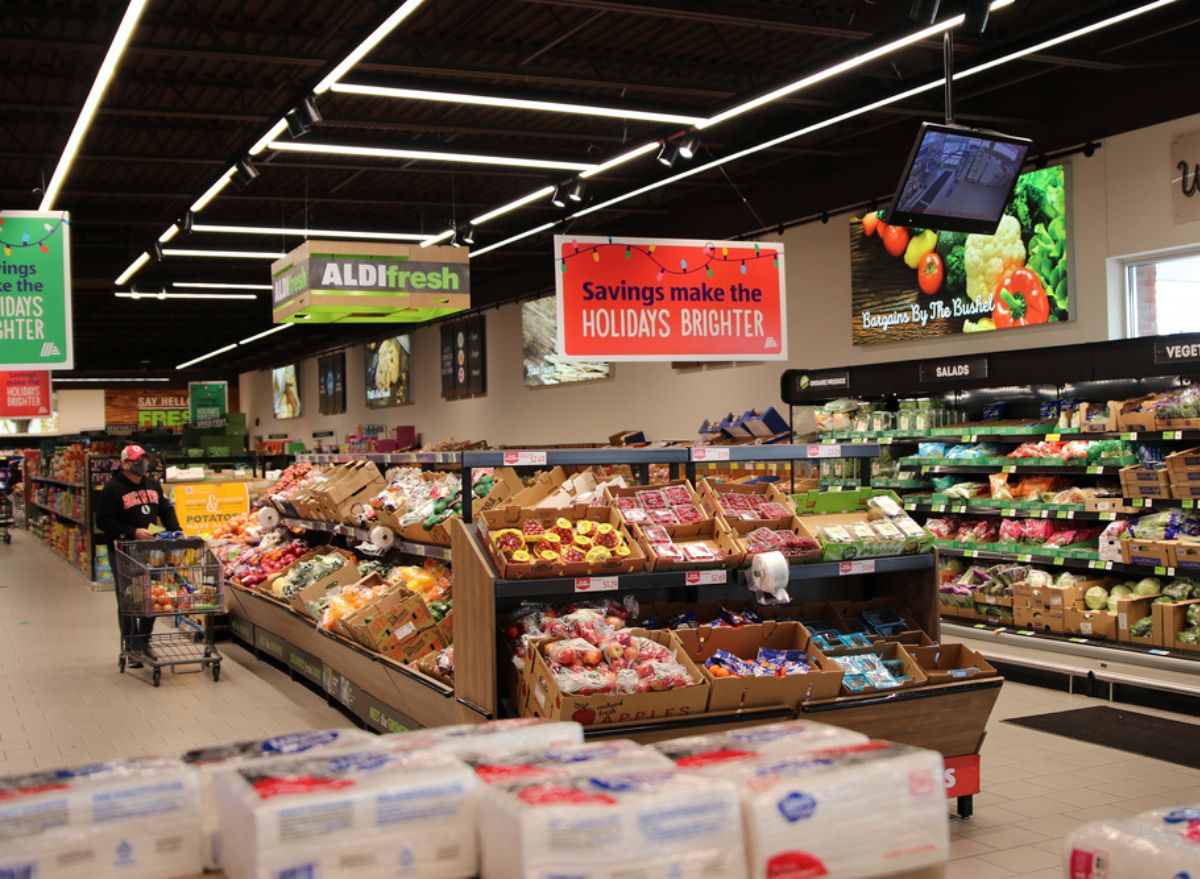
If you've been following the news, you may have sighed in relief after reading July's Consumer Price Index report. Since June 2022, inflation hasn't fluctuated much, a welcome change from the jumps we've seen every month.
But this hopeful sign for the future doesn't mean much for the challenges shoppers face today. While the rise in costs isn't increasing, the damage has already been done—groceries are still up 10.9% since last year. Even the more affordable stores like ALDI and Trader Joe's, which build their name on their everyday low prices, are raising prices.
It's a significant adjustment for shoppers, who are now trying to cut back wherever possible. The Washington Post highlighted some of the saving methods some are taking. A few tactics include buying in bulk, organizing weekly meals based on what's on sale, and eating smaller portions.
Unfortunately, you can only get so far by sticking to your necessities when the staples are eating up more of your wallet. These five food items are the most expensive they've been in years, so you may want to buy them sparingly, find alternatives, or reduce your spending habits outside of the grocery store.
(Need tips on what to skip? For products not worth the buy, check out our list of non-dairy milks to avoid.)
Eggs
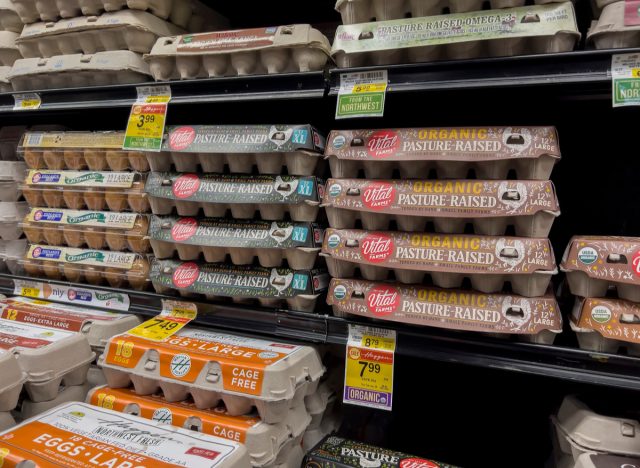
When you're looking for a cheap source of protein, eggs have always been a trusted source. In pre-pandemic times, you could pick up a dozen for a little more than a dollar and start your day with some heart-healthy omega-3 fats.
This year, the supply has drastically changed, putting eggs out of reach for those who are stretching their every dollar. According to a comparison by The Street, an 18-count carton of eggs from Walmart's Great Value brand more than doubled in price since 2019, from $1.18 to $2.67. That's 14 cents per egg today compared to 6 cents before the pandemic.
And that's on the low end. The August 2022 USDA Egg Markets Overview reported that the average price for a dozen eggs is $2.71 – a whopping 22 cents per egg. It's mostly due to the recent tear of avian influenza that killed off millions of birds. The USDA noted there is currently a shortage of 134 million hens in the egg-laying population.
But eggs are still a staple for their versatility and relative cost. Luckily, according to Bloomberg, flocks are slowly but surely returning to usual numbers, which should bring prices back down in time.
Dairy
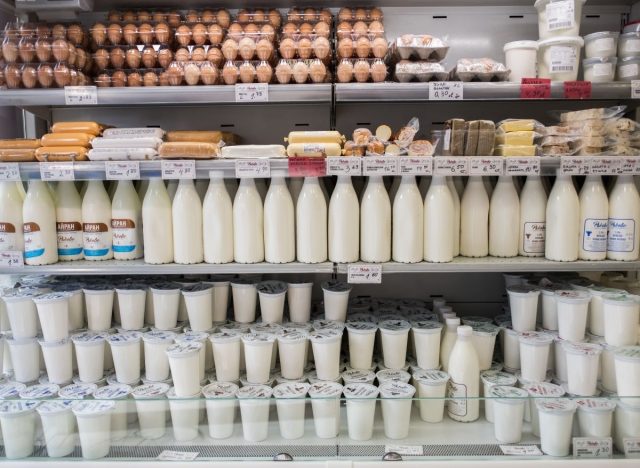
The effects of a shortage can linger, and that's true of the hampered dairy production. Milk was in short supply globally earlier this year. In the United States, the milk deficit was caused by a lack of labor and reduced herd count in the U.S. Meanwhile, in Europe, Bloomberg reported the United Kingdom grain farmers faced dry fields from scorching heat and drought, making it difficult to keep herds fed.
Now, with milk prices up, the costs are piling up for products like butter and cheese – and the price hikes are passed onto the customer. The Street found Walmart Great Value 1% Milk increased since 2019 by around 150%, a gallon ringing up for $3.46 today. So perhaps it's not much of a surprise that cheese and butter are climbing right alongside it, with July's CPI Report showing a 12.6% increase from last year's average price tag.
Considering that these milk-based items are household staples for most, it's another thing you might want to clear a spot in your budget for. That said, giving up dairy comes with its own health-related upsides.
Poultry
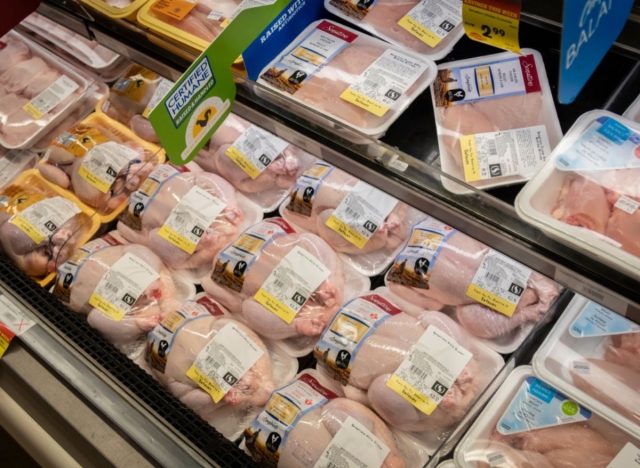
Chicken prices are estimated to rise over 15% for the year – higher than general inflation – and they might not stop there. It's true that avian flu outbreaks posed a temporary, devastating blow to the supply of poultry.
Now there's another reason to suspect that the price increases will continue. Despite anti-trust regulations in the poultry industry, Forbes reported that a $4.5 billion merger between two of the biggest chicken producers, Cargill and Continental Grain and Sanderson Farms, was approved by the Department of Justice.
What does that have to do with your wallet? Consumers pay lower prices in markets that have healthy competition. But when a single company controls most of the supply, they can charge more for the product, and most will continue to buy because there aren't many alternatives.
According to Forbes, the move by Cargill will "control an estimated 15% of the chicken market and push the market share of the top four competitors to more than 60% from about 50%." This could potentially make the sticker price higher in the long run, which is concerning for those who opt for chicken because it tends to be a more affordable protein.
Beef
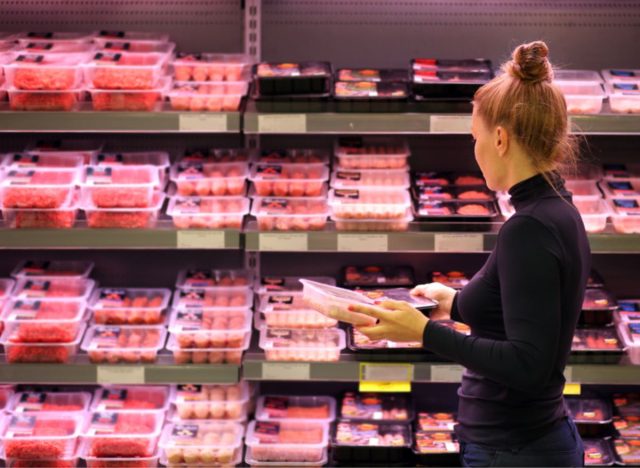
Once again, beef makes the list. The CPI reports the price of meat at 7.2% higher than the previous year. When it comes to supply chain bottlenecks, the meat industry has seen it all: labor shortages, truck shortages, and herd shortages.
Drought and extreme climates have forced ranchers to cut back their herds, unable to provide adequate feed and water for the cattle. This means slaughtering more livestock than planned – which temporarily increases the current supply but causes ripples in the future expected beef production.
According to Reuters, the reduction in cattle is "a decision that will tighten livestock supplies for years." One Kansas farmer told the news source, "The prices are here to stay for a while." Economists said that the lower herd populations will take longer to reproduce to the level of demand, which will leave consumers with less beef over the next few years.
If you're looking for your sign to eat less red meat and reduce your risk of cardiovascular concerns, this may be it.
Cooking Oils
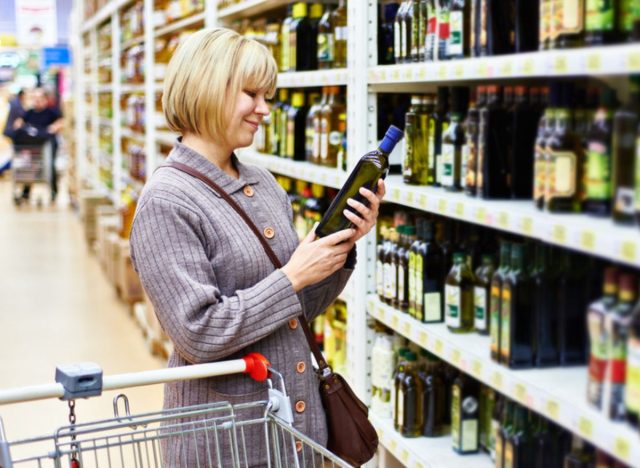
Shortages of palm, canola, and soybean oils earlier this year caught up to us at the supermarket. These edible oils are key ingredients in packaged foods, candy treats, makeup, and toiletries. In the spring, palm oil exports from Malaysia and Indonesia were scarce, increasing the demand for alternatives, like canola and soybean.
Since many products rely on vegetable oils, demand has remained high, and prices shot up with it. The CPI numbers reveal a 20.8% price increase for this year. FoodDive reported that Crisco raised rates by 23% to cover the higher cost of production on shortening and cooking oil.
It's often difficult to avoid higher commodity costs, but you can save by picking the private-label version over the name brand, buying fewer processed foods, or using an air fryer to cook with less oil. Besides saving money, cutting back on your consumption of vegetable oils also helps reduce inflammation and weight gain.









